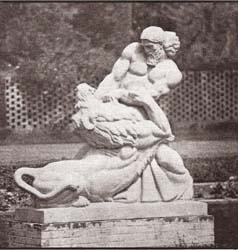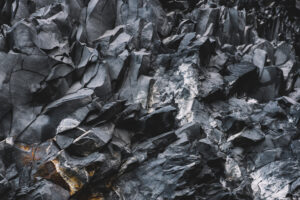
Home » Journal Articles » Thoughts & Opinions » Sculptors from the Past: Gleb Derujinsky – July/Aug 1996
Russian born sculptor receives many commissions and awards in the USA.
Gleb W. Derujinsky was born in Smolensk, Russia, on August 13th, 1888. His father was a well known scientist and taught at the University of Leningrad and later at St. Petersburg. Gleb studied law in Leningrad at the age of sixteen, and began to draw and paint at the same time. He earned the silver medal by the School for the Encouragement of Art. When his interest turned to sculpture, he was sent to Paris in 1911, studying fIrst with Verlet and then with Injalbert. In 1913 he entered the Imperial Academy of Art at Leningrad for four years. He was fIrst inspired by Troubetzkoy, whose influences can be detected in his early works. His next inspiration was from Rodin, who gave him encouragement and advice. He became a candidate for the Prix de Rome when the Revolutiou broke out in 1917. Fleeing to Crimea, he stayed with Prince Felix Youssoupoff, later going to the Caucasus with his family. Two years later he shipped out as a sailor on a cargo boat bound for New York.
Within two years of his arrival in the US he was ready to give an exhibition at a New York gallery. The National Sculpture Society elected him as a member and the Beaux-Arts Institute of Design engaged him as a teacher. He received a commission for a memorial bas-relief for the Pittsburg Courthouse and designed sundials and other garden sculpture. “Eve”, with serpent coiled at her side, won the gold medal at the Philadelphia Sesqui Centennial Exposition in 1926. For his “Egyptian Lotus Carrier” and a sundial with an Egyptian fIgure he adopted a severe linear style. His work was awarded a gold medal at the Paris Exposition in 1937; in the next year, “Upheaval”, a heroic figure in the throes of an upward sttuggle, was given the Watrous Gold Medal of the National Academy of Design.
Derujinsky was an accomplished pianist and many of his friends were musicians. The rhythmic qualities of his sculpture may reflect this avocation. The subjects of his portraits were the pianist Alexander Siloti, Sergei ProkofIev and Rachmaninov, for whose bust Derujinsky was given the Anna Hyatt Huntington Prize at the National Academy of Design in 1949. Other busts include Theodore Roosevelt, Franklin D. Roosevelt, Sir John Lavery and eight medallion portraits in wood of the former postmaster generals for the new Post OffIce Department Building, Washington, DC. Derujinsky was a member of the Nadonal Academy of Design and a fellow of the National Sculpture Society.



We need some kind of descriptive text here.